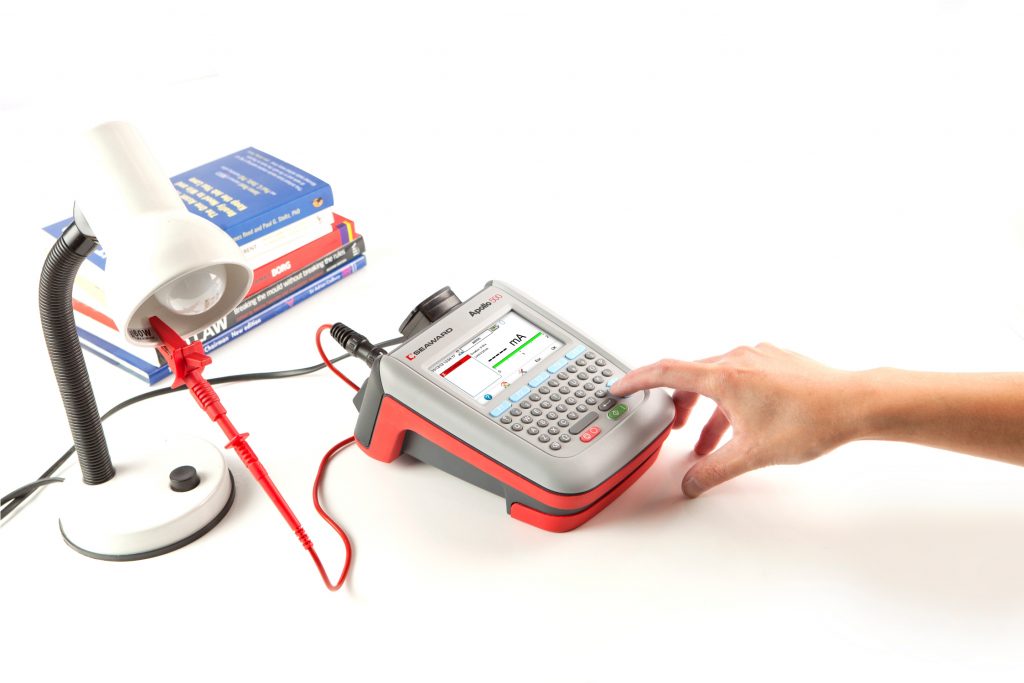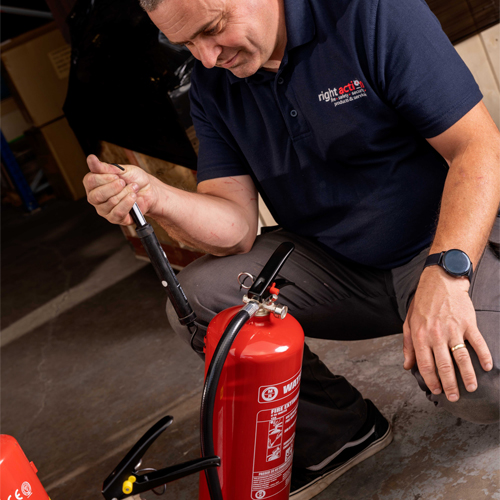Top 10 Tips For Assessing Qualified Technicians In PAT in Stoke on Trent
The most crucial aspect to turn an unmechanical process, Portable Appliance Testing (PAT), into a safe and legally-defendable safety system. In accordance with UK legislation, specifically the Electricity at Work Regulations 1989, there is no mandated licensing scheme or legally-required qualification for PAT testers. Regulation 16 stipulates that all persons possess "technical skills or experience" necessary to prevent the risk of injury or danger. To meet the "competence" principle, the person who is the employer (dutyholder) must select and appoint only technicians with the combination of formal education as well as practical experience and an ability to judge. Without mandatory certifications, there is an array of technical skills. Therefore, it is essential for the dutyholder to be able to effectively examine the competence of technicians. A qualified technician is not just competent to conduct tests, but they also know the fundamentals of electrical safety. They can assess test results in a precise manner and make informed decisions on pass/fail based on IET Code of Practice.
1. The EAWR 1989 definition of competency in Stoke on Trent
The lawful requirement is outlined by Regulation 16 of the Electricity at Work Regulations 1989 in which it is stipulated that employees must be competent in avoiding injuries and dangers. HSE define "competence" as the capacity to do a job efficiently and safely without putting yourself and other people in danger. The HSE defines competence as "the ability to carry out an activity safely and efficiently without risking their own safety or that of others." A technician is only legally qualified if they possess all three.
2. Formal qualifications and demonstrable competency in Stoke on Trent
The formal qualification is not required by law, but it is the most clear evidence of understanding. City & Guilds qualification 2377 ("In-service inspection and testing of electrical equipment") is industry standard. The possession of this certificate doesn't mean that you are competent. It has to be taken with actual experience. The dutyholder should look for an appropriate certificate as well as evidence of actual experience. Technicians who do not have a formal qualification would need to provide very robust evidence of vast experience and knowledge to be deemed competent.
3. City & Guilds 2377 Qualification What is it?
City & Guilds is a Level 3 qualification. It tests a person's capacity to conduct tests, inspections as well as their understanding of the IET Code of Practice. The test is split into two sections, 2377-77 and 2377-78. The certificate is complete and proves that the tech has been through an independent assessment of both their theoretical knowledge as well as their skills in the field. To verify the certification, it is advisable to ask for the number of the certificate. The certificate number can be verified on the City & Guilds Online Verification Portal.
4. Experience in the hands-on field is crucial. in Stoke on Trent
Knowledge that is theoretically based is useless without application. A technician who is proficient requires extensive hands-on test experience with a variety of appliances in different environments. This experience allows technicians to spot subtle faults, safely handle unfamiliar equipment and operate effectively in complex environments such factories or construction sites. The duty holder should inquire with an aspiring technician or supplier about the tester's years of experience as well as the kinds of sites they usually work on to gauge the relevance of their practical background.
5. Experience with IET Code of Practice in In-Service Inspection and Testing
The IET Code of Practice has become the bible of portable testing of appliances. A qualified technician must not only own an original copy, but should be able to demonstrate a deep, thorough knowledge of its contents. This means knowing the various types of equipment, the sequence of visual tests and inspections and the correct way to use the test equipment. Being able to apply and reference this information is a key indicator for their professionalism and competency.
6. Calibration Equipment and Test Instruments
A skilled technician knows that their own test equipment is fundamental to achieving accurate results. A UKAS accredited lab has to periodically test their PAT tester (typically once per year) in order to maintain its precision. They should have a proof of calibration that is valid for the equipment. Furthermore, they must understand how to use the device correctly, perform an everyday user test (e.g., a lead test) and understand the results it provides, not just blindly record numbers.
7. Capability to perform meaningful visual Inspections in Stoke on Trent
The majority of faults are identified through an extensive visual inspection. This step is extremely important for technicians. They will inspect all connectors, plugs and cables, as well as casings for damage, wear signs or indications that they've overheated. The technician knows how to properly connect a plug and has the right fuse rating. They could not bother with this step or rush through it using an electronic test device. This is a grave failure of duty.
8. Judging and Decision-Making: Interpreting Results, and Applying Tests of Pass/Fail in Stoke on Trent
The tester's electronic sensor provides readings; the technician provides the judgement. It is the ability of the technician to interpret readings, in relation to the IET Code of Practice and the appliance that demonstrates their proficiency. For instance, they need to understand when a slightly high insulation resistance reading is acceptable or when an apparent earth continuity reading might be a sign of a faulty component in a particular kind of appliance. The true importance of a trained technician is their ability to make decisions.
9. Insurance and Liability Considerations in Stoke on Trent
While it is not a requirement of the law, any competent technician must have Public Liability Insurance. It protects the client if the technician causes harm to the property while performing tests. In addition, by hiring an experienced technician the duty holder can strengthen their legal defence of "due diligence," showing they took the necessary steps to choose a suitable person, which is crucial if an electrical incident is later examined.
10. Documentation and Communication Skills in Stoke on Trent
A testing process that lacks transparent and precise documents is not worth the effort. A qualified technologist must produce precise, clear documents and asset registers that correctly identify every device. All test results should be documented and the conclusion outlined. They must also be able to communicate effectively with the person in charge, explaining the findings of any defects as well as the risk associated with it and the necessary actions (e.g., repair or replacement). Communication with the dutyholder is a crucial part of the safety process. See the most popular electrical equipment testing in Stoke on Trent for blog recommendations.

Fire Extinguisher Servicing – Top 10 Tips in Stoke on Trent
There's more to picking a UK-based fire extinguisher maintenance provider than simply selecting a service that can perform an annual test. A reputable provider is a single point of contact for your entire range of fire safety equipment and offers a comprehensive range of services that ensures the highest level of compliance, minimizes the burden of administration, and offers a holistic security solution. A company's services are an indication of their expertise, commitment, and ability to be an ongoing partner. The full range of services available to help you make the best choice for security and effectiveness.
1. This service is controlled by the BS 536-3. A full-service provider will manage all scheduled times for monthly visual checks (often with your guidance) and the annual mandatory service for all extinguishers for fire. Extended service (discharge testing) for the foam, water or powder models every five years. And the overhaul and testing of pressure for CO2 extinguishers after 10 years. These visits should be scheduled in advance, and must be accompanied by a certificate.
2. Installing and supplying new equipment A reputable company will not only provide maintenance, but will also provide and guide you on the appropriate equipment. This requires a site survey to determine the type and size of extinguishers required according to the risk of fire assessment, and the specific hazards within the structure (e.g. Class A B C F electrical). The company will provide the BSI-Kitemarked equipment, or equivalents that are certified and install them in accordance with the requirements set forth in the BS 5306-8. This includes proper signage, mounting levels, and accessibility.
3. Fire Risk Assessment: Many of the top service providers employ certified assessors to conduct or review your legally mandated Fire Risk Assessment. Although it should be an independently conducted procedure, having your extinguisher providers contribute or complete the FRA can result in a fully integrated strategy in which the equipment used is directly compatible with the identified risk. This creates a track for auditing from the identification of hazards to measures' implementation.
4. Emergency call-out and reactive maintenance: Equipment may be damaged, stolen or accidentally discharged at any point. A reputable firm offers an efficient emergency callout to immediately replace and recommission any equipment. This includes replacing equipment which are not present or have been vandalised.
5. Other Fire Equipment Servicing – Your fire safety strategy is not only limited to portable extinguishers. Full-service providers are able to service and certify other equipment. This is a feasible contract. This includes fire blankets and hose reels as well as fire alarm systems, lighting emergency lighting, and dry/wet climbers. This approach ensures consistency, simplifies documentation, and often helps lower overall costs.
6. Training and Education Services: Equipment can only be efficient if people know how to utilize them. Many providers also offer complementary services, such as extinguishers (often using live-fire simulations), and training for fire wardens. It will empower your staff and improve overall security.
7. Online portals and comprehensive documentation are mandatory. The leading companies provide more than simply certificate on paper. These include detailed electronic service reports, asset registers and access to customer portals on the internet where you can view the entire history of your service, download certificates, report the faults and schedule appointments 24/7, dramatically simplifying compliance management.
8. Disposal Services and Environmental Services – As per Duty of Care regulations, responsible disposal of decommissioned fire extinguishers is a legal and environmentally responsible obligation. A full-service provider can take care of this effectively. They use licensed waste carriers to dispose of the extinguishers. They also offer waste Transfer Notes that prove legal and proper disposal. Avoid the fines that can be high for improper disposal pressurised vessels or hazardous materials.
9. Planned Preventative Management also known as PPM (Planned Preventative Management), and Asset Management. The best providers offer proactive PPM contracts. They manage your complete portfolio of assets, including tracking service due dates for different types of equipment, and then automatically scheduling visits. This relieves the burden of administrative work from your shoulders and ensures there is never a missed service.
10. Expert providers provide consultancy services for more complex or larger sites. This could include a gap analysis to determine if your current fire safety measures comply with the legal standards. Experts can also offer guidance on the best remedial strategies in addition to regular compliance audits. Follow the top rated fire safety in Stoke on Trent for blog advice.

